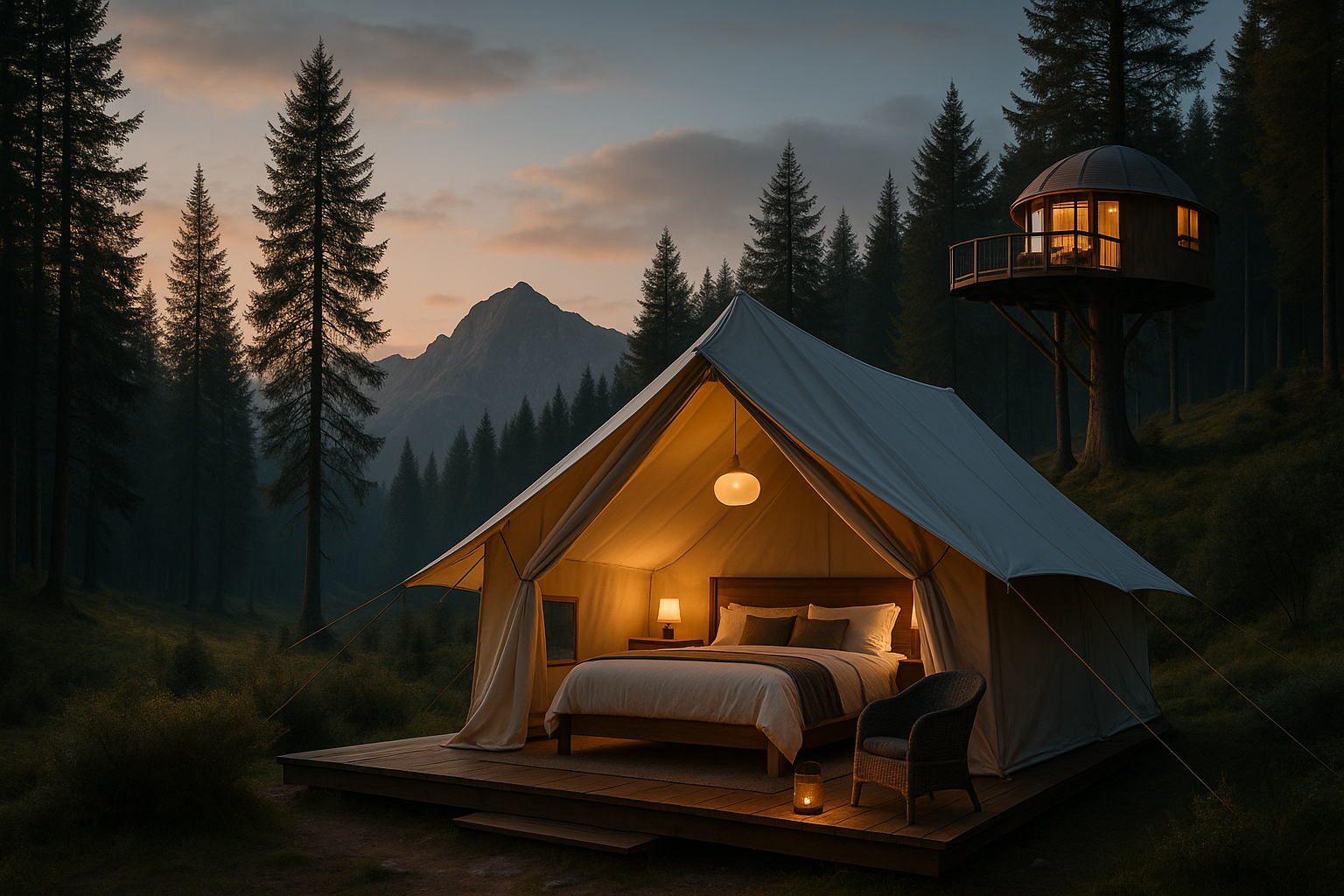The Renaissance of Glamping: A Modern Take on Camping
The world of travel and transportation is always evolving, with new trends constantly emerging. One such trend that has gained considerable traction in recent times is glamping. This modern take on traditional camping combines the thrill of being in the great outdoors with the comfort and luxury of high-end accommodations. In this article, we delve into the origins, current trends, and practical applications of glamping, providing a comprehensive overview of this unique travel style.

The Origins of Glamping
Glamping, a portmanteau of ‘glamorous’ and ‘camping’, first gained prominence in the early 2000s. This trend was born out of a desire to experience the beauty and tranquility of nature without sacrificing the comforts of a luxury hotel. Early glamping sites were primarily found in the United Kingdom and Europe, where they offered a novel alternative to traditional camping and hotel stays.
The Rise of Glamping
In recent years, the popularity of glamping has skyrocketed, driven by a growing desire for unique, immersive travel experiences. Today, glamping sites can be found worldwide, offering a range of accommodation types, from luxury tents and yurts to treehouses and eco-pods. Many of these sites offer amenities like comfortable beds, en-suite bathrooms, hot tubs, and private chefs, providing a level of comfort that far surpasses that of traditional camping.
Advantages and Challenges of Glamping
Glamping offers several advantages over traditional travel accommodations. It allows travelers to connect with nature in a way that traditional hotels often don’t, providing a unique, immersive experience. Additionally, many glamping sites are eco-friendly, using sustainable materials and practices.
However, glamping also has its challenges. Due to the luxury amenities offered, it can often be more expensive than traditional camping or budget hotels. Another potential drawback is the lack of privacy and noise control at some glamping sites.
Impact on Travelers
The rise of glamping reflects a broader shift in travel preferences towards experiences that are unusual, personalized, and immersed in nature. This trend has been particularly popular among millennials and Gen Z travelers, who often prioritize experiences over material possessions.
Interesting Glamping Facts and Tips
-
Glamping accommodations can range from treehouses and cabins to converted airplanes and hobbit holes.
-
Some glamping sites offer unique experiences, like stargazing nights or wildlife safaris.
-
For the best glamping experience, research and book in advance to secure the best location and amenities.
-
Always check the weather forecast before your trip. While many glamping accommodations are weather-proof, some are better suited for certain weather conditions.
In conclusion, glamping is a dynamic and growing trend that offers a unique blend of luxury and outdoor adventure. It reflects a larger shift in travel preferences towards experiences that are unique, immersive, and eco-friendly. As this trend continues to evolve, it will undoubtedly reshape the travel and hospitality landscape in intriguing ways.




